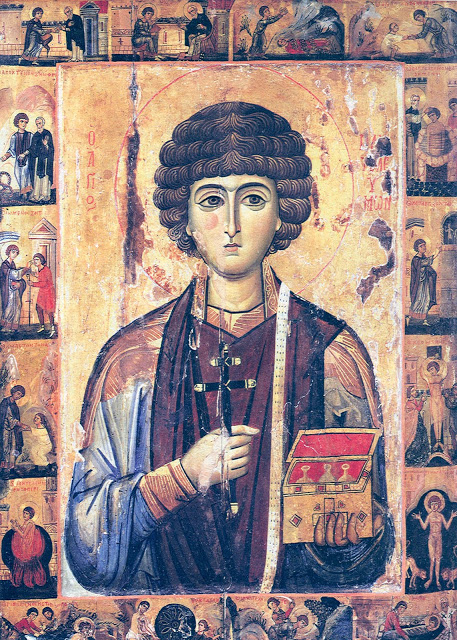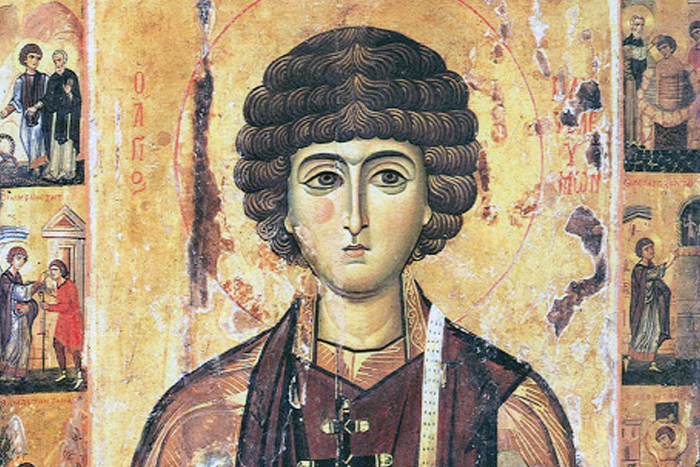
Born Pantoleon (Gr. “in all-things like a lion”), this pagan took the name Panteleimon (Gr. “All-Merciful”) upon being baptized. He belongs to a group of Saints known as Holy Unmercenaries (Άγιοι Ανάργυροι): saints who healed without asking for payment – something very uncommon during the first millennium.
 In keeping with the principle that in icons Saints hold the instruments of their salvation, Unmercenary Saints will often hold a medicine box or flask of oil. They may also be shown holding a long-handled spoon with which to dispense the medicine, usually resembling a Communion Spoon used to distribute the Body and Blood of Christ to the people in the Liturgy. The connection between healing and the taking of communion is thus reinforced.
In keeping with the principle that in icons Saints hold the instruments of their salvation, Unmercenary Saints will often hold a medicine box or flask of oil. They may also be shown holding a long-handled spoon with which to dispense the medicine, usually resembling a Communion Spoon used to distribute the Body and Blood of Christ to the people in the Liturgy. The connection between healing and the taking of communion is thus reinforced.The icon of St Panteleimon above is from the early 13th century and shows the Saint holding a martyr’s cross along with the normal medicine box. The icon is a vita icon, that is, it contains scenes from Panteleimon’s life, particularly his martyrdom. The scenes shown are:
Top Row: The priest Hermolaos adopting Panteleirnon; Panteleimon learning medicine from Hermolaos; Panteleimon praying for a child bitten by a snake; Panteleimon resurrecting the child.
Left Side: Panteleimon killing the snake; Panteleimon healing the blind man; Panteleimon raising the paralytic; Panteleimon in a vat of boiling lead.
Right Side: Panteleimon baptized; Panteleimon destroying the idols; Panteleimon scraped and burned; Pantcleimon put among the wild beasts.
Bottom Row: Panteleitnon thrown into the sea; Panteleimon and the wheel studded with nails, which turns on his torturers; Panteleimon beheaded; the burial of Panteleimon.
Source: https://iconreader.wordpress.com/2011/07/26/holy-martyr-panteleimon-the-unmercenary/




